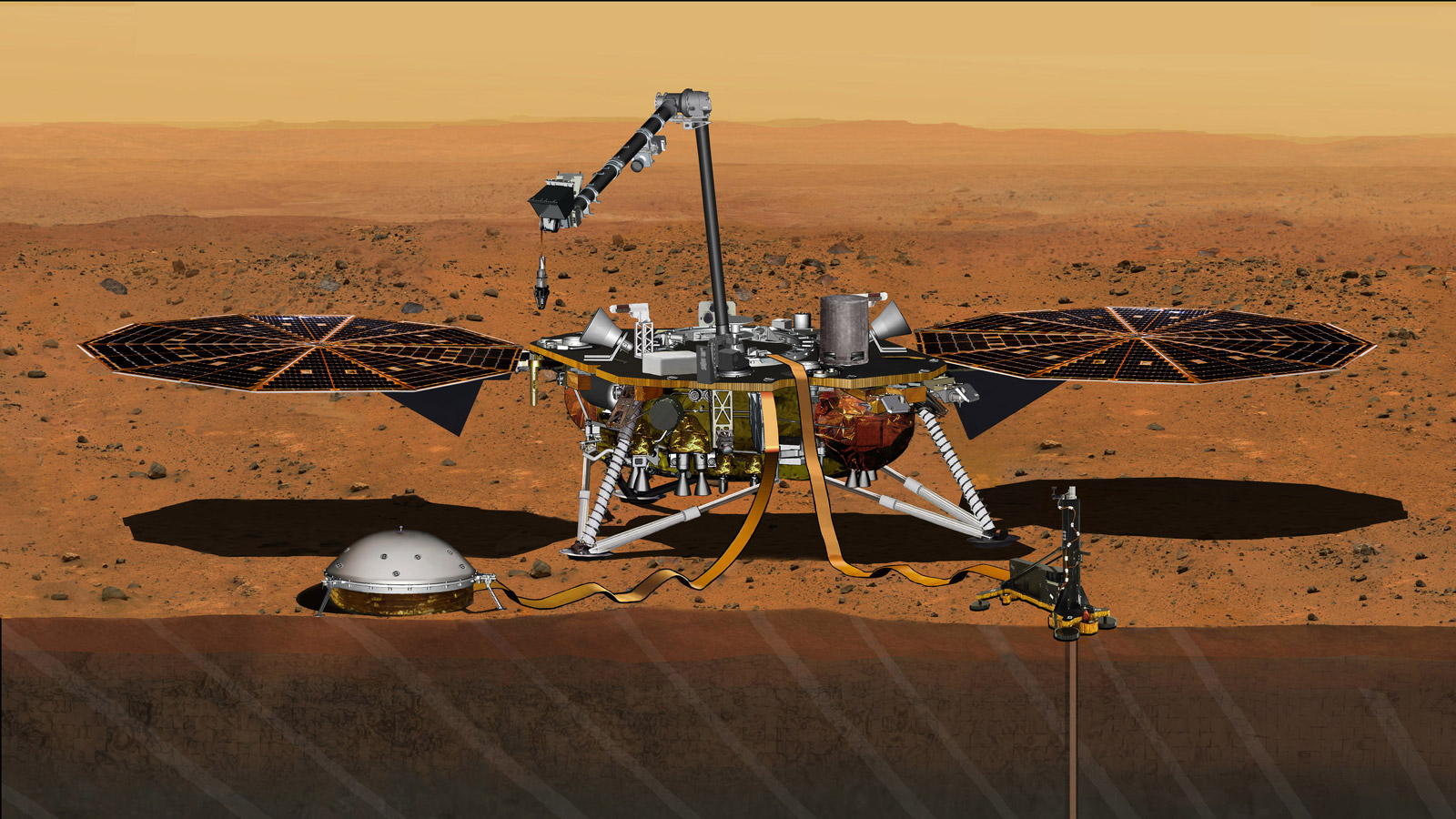
NASA’s InSight mission to Mars will now go ahead as planned, it was announced today. After a delay due to a vacuum leak last December, with a launch originally slated for last March, it was unclear whether the mission would still be given the green light for a later launch. But now NASA has approved a launch for spring 2018.
NASA had targeted that time period before; final approval for the mission was given this week by the Science Mission Directorate. The launch period opens on May 5, 2018, with the landing scheduled for Nov. 26, 2018.
“Our robotic scientific explorers such as InSight are paving the way toward an ambitious journey to send humans to the Red Planet,” said Geoff Yoder, acting associate administrator for the Science Mission Directorate, in Washington. “It’s gratifying that we are moving forward with this important mission to help us better understand the origins of Mars and all the rocky planets, including Earth.”
It is welcome news for those who have been advocating for the mission despite the setback. Launch preparations were suspended last December when a leak was discovered in the Seismic Experiment for Interior Structure (SEIS) instrument. SEIS will look for “mars quakes”—extremely sensitive, it can measure ground movements as small as half the radius of a hydrogen atom. NASA’s Jet Propulsion Laboratory (JPL) will now be in charge of redesigning, developing, and qualifying the instrument’s evacuated container and the electrical feedthroughs which had failed previously. This procedure is known as a mission “replan.” Likewise, the Centre National d’Études Spatiales (CNES) in France will develop and deliver key sensors for SEIS, integrate the sensors into the container, and conduct the final integration of the instrument onto the spacecraft. The Heat Flow and Physical Properties Package (HP3) will be contributed to the science payload as well, by Germany.
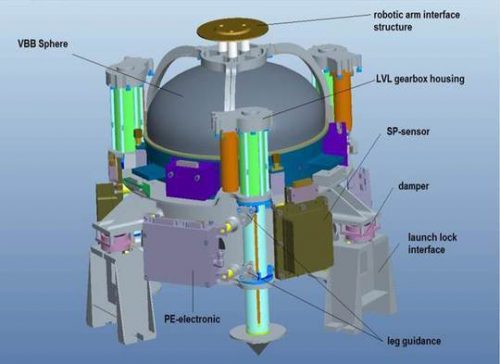
Previous attempts to fix the leak problem in time for the earlier launch failed.
“The JPL and CNES teams and their partners have made a heroic effort to prepare the InSight instrument, but have run out of time given the celestial mechanics of a launch to Mars,” said JPL Director Charles Elachi. “It is more important to do it right than take an unacceptable risk.”
“It’s the first time ever that such a sensitive instrument has been built. We were very close to succeeding, but an anomaly has occurred, which requires further investigation. Our teams will find a solution to fix it, but it won’t be solved in time for a launch in 2016,” said Marc Pircher, Director of CNES’s Toulouse Space Centre.
The launch may have been delayed, but it is better than launching easier with a likely still-faulty instrument.
CNES President Jean-Yves Le Gall added, “This confirmation of the launch plan for InSight is excellent news and an unparalleled opportunity to learn more about the internal structure of the Red Planet, which is currently of major interest to the international science community.”
Saving the mission is great news, but it will increase costs. The original NASA budget for InSight was $675 million, but due to the delay and redesign, the cost of the mission will increase by $153.8 million. As it stands now, according to NASA, this will not affect any other current planetary missions, but it may result in fewer opportunities for new missions, from fiscal years 2017-2020. Conceivably, this could affect additional Mars missions, or future missions to the outer Solar System. One such mission which still has the go-ahead but may already be squeezed by funding cuts next year is the Europa Clipper. That is one of the most exciting missions on the table, since it will focus on searching for evidence of habitability or even life itself in Europa’s subsurface ocean.
InSight will be a unique Mars mission, focusing on the interior of the planet rather than the surface or atmosphere, as other missions have done. Scientists want to better understand how smaller rocky planets like Mars and Earth formed.
As Jim Green, director of NASA’s Planetary Science Division, noted, “We’ve concluded that a replanned InSight mission for launch in 2018 is the best approach to fulfill these long-sought, high-priority science objectives.”
There are several key mission objectives, including:
- Determine the size, composition, physical state (liquid/solid) of the Martian core
- Determine the thickness and structure of the Martian crust
- Determine the composition and structure of the Martian mantle
- Determine the thermal state of Mars’ interior
- Measure the magnitude, rate and geographical distribution of Mars’ internal seismic activity
- Measure the rate of meteorite impacts on the surface of Mars
The instruments on InSight include:
- Grapple – Mechanism at the end of the IDA that grips the instruments during deployment
- Heat Flow Probe – Hammering mechanism that pulls the temperature sensors down into the regolith
- HP3 – Heat Flow and Physical Properties Package, the heat flow experiment
- IDC – Instrument Deployment Camera, pointable medium-resolution camera
- IDA – Instrument Deployment Arm
- ICC – Instrument Context Camera, fixed wide-angle camera
- Pressure Inlet – Wind-shielded opening for pressure sensor
- RISE Antenna – X-band radio antenna for the Rotation and Interior Structure Experiment
- SEIS – Seismic Experiment for Interior Structure, the seismometer
- Tethers – Cables carrying electrical power, commands and data between the lander and instruments
- TWINS – Temperature and Winds for InSight, environmental sensors
- UHF Antenna – Antenna used for communication with orbital relay spacecraft
- WTS – Wind and Thermal Shield protecting the seismometer from the environment
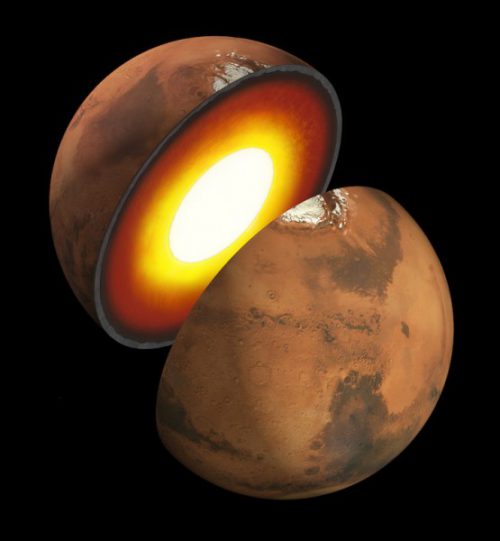
“Learning about the interior structure of Mars has been a high priority objective for planetary scientists since the Viking era,” said John Grunsfeld, associate administrator for NASA’s Science Mission Directorate in Washington. “We push the boundaries of space technology with our missions to enable science, but space exploration is unforgiving, and the bottom line is that we’re not ready to launch in the 2016 window. A decision on a path forward will be made in the coming months, but one thing is clear: NASA remains fully committed to the scientific discovery and exploration of Mars.”
As summarized on the mission website:
“InSight’s primary objective will be to uncover how a rocky body forms and evolves to become a planet. Generally, a rocky body begins its formation through a process called accretion. As the body increases in size, its interior heats up and melts. As it subsequently cools and recrystallizes it evolves into what we know today as a terrestrial planet, containing a core, mantle and crust. While all of the terrestrial planets share similar structures and their bulk compositions are roughly the same as the meteoritic material from which they were formed, they are by no means uniform. Each of the terrestrial planets reached their current formation and structure through a process known as differentiation, which is poorly understood. InSight’s goal will be to solve the mystery of differentiation in planetary formation – and to bridge the gap of understanding that lies between accretion, and the final formation of a terrestrial planet’s core, mantle, and crust.
“InSight’s investigation of the Red Planet’s interior is designed to increase understanding of how all rocky planets, including Earth, formed and evolved,” said Bruce Banerdt, InSight Principal Investigator at NASA’s Jet Propulsion Laboratory (JPL) in Pasadena, Calif. “Mars retains evidence about the rocky planets’ early development that has been erased on Earth by internal churning Mars lacks. Gaining information about the core, mantle and crust of Mars is a high priority for planetary science, and InSight was built to accomplish this.”
InSight will be the first Mars mission to permanently place probes into the ground using its robotic arm, including the seismometer and a heat-flow probe. The seismometer will measure tiny marsquakes which cause microscopic movements of the ground, which will help scientists better understand the interior of Mars. The heat-flow probe measures heat coming from the planet’s interior and will hammer itself about 16 feet (3 to 5 meters) deep into the ground. Even the radio can be used to measure wobbles in the planet’s rotation and environmental instruments to monitor weather and changes in the magnetic field. Two cameras will survey the landscape, although being a lander and not a rover, InSight will not be able to go anywhere.
Design-wise, InSight is similar to the Mars Phoenix Lander, which landed near the Martian north pole in 2007. InSight re-uses a lot of the same technology from MPL.
Such delays have happened before, such as with the Curiosity rover mission.
“In 2008, we made a difficult, but correct decision to postpone the launch of the Mars Science Laboratory mission for two years to better ensure mission success,” said Jim Green, director of the Planetary Science Division in Washington. “The successes of that mission’s rover, Curiosity, have vastly outweighed any disappointment about that delay.”
That decision paid off in spades, and it seems likely that the same will be true for the InSight mission as well.
More information about the InSight mission is available here.
Want to keep up-to-date with all things space? Be sure to “Like” AmericaSpace on Facebook and follow us on Twitter: @AmericaSpace




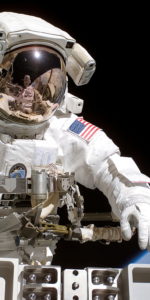
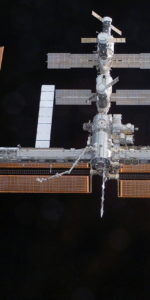
Is the launch still planned for Vandenberg?
If so, I’m curious about the launch azimuth. Can you get to Mars launching South from Vandenberg? Will they launch retrograde?
“Is the launch still planned for Vandenberg?”
Yes it is.
Yes, you get to Mars by launching South out of Vandenberg at local sunset, then flying around the South Pole then into a trans-Mars injection outgoing asymptote that is tangent to the Earth’s orbit. You loose a little delta-V out of the Western Range, but Atlas V has plenty of performance to spare for a s/c platform that was originally designed for a Delta II LV.